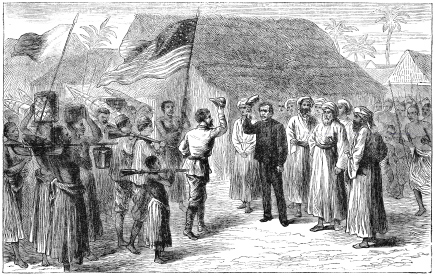
Curiosity has a strong pull on the
human psyche. There is something about the way we are wired that makes us want
to know. If someone has a bit of information and you do not, does it drive you
crazy until you hear the news yourself? That was the case with the
disappearance of Dr. Livingstone. His story was left incomplete until Stanley
made his eight month trek into the heart of Africa and then told the world
about the famous doctor. In essence, Stanley closed the curiosity circle. In Gestalt
Psychology, this is known as the theory of closure. In other words, there is
something in our brains that is disturbed until we can completely close the
loop.
How does curiosity play out in
business? In marketing, curiosity can be used to drive people to a product. We
live in the age of info-overdrive, where people expect everything to be found
on your web site. However, putting the full story about your products on the
web may not be in your best interest. Allowing room for some intrigue that
drives a person to an action point is a better way of offering your services on
the web, especially if the sales transaction is not finalized via e-commerce.
An action point is the next step you want the customer to take to show interest
in your product. That may be to contact your sales team in some manner (e-mail
them, phone them, come into your store, etc.) It may be to ask for more
information or to click to a pricing calculator. Whatever the action point, you
need to create intrigue to get the customer to take that next step. This is
especially true if price is not the main driver behind why people should buy
your product. If you are selling on quality, you must have some sort of open
loop action point to get the customer in front of your sales team. Quality is
one of those characteristics that is hard to write about and have people take
you seriously. Why? Because it is easy for anyone to claim their products and
services are of high quality. However, when you are selling quality, the most
convincing way of making a sale is when you are interfacing with a person, not
a computer. A good sales person can show me the quality and talk to me about
the satisfaction of other customers. He can convince me of the benefits of the
product, and he can read what I’m thinking by the way I respond to him. How do
you get the customer in front of a sales person? You do it by creating intrigue
and an action point that brings the customer to you.
Take a strong look at the way you are offering your
products and services, especially on your web site. Have you given the customer
enough information to get them interested, but not enough to know everything
there is to know? Have you given them a clear direction to the next step in the
buying process? Is this action point easy to use? If you answered no to any of
these questions, you might need to reconsider the methods you are employing to
sell your products, Create some intrigue; leave the loop open, let your
customer take the next step in closing that gap and see what happens to your
sales.
Stanley’s accounts of finding
David Livingstone made the New York Herald the most read publication of 1871. The editor of the Herald, James Gordon Bennett, Jr. capitalized on the curiosity of
his market to send Stanley on his expedition. It paid off.
______________________
Stanley begins search for
Livingstone, This Day in History,
History.com
Into Africa: The Epic
Adventures of Stanley and Livingstone by
Martin Dugard, Broadway Books, New York
David Livingstone's Life, Livingstone Online
Illustration © Stocksnapper